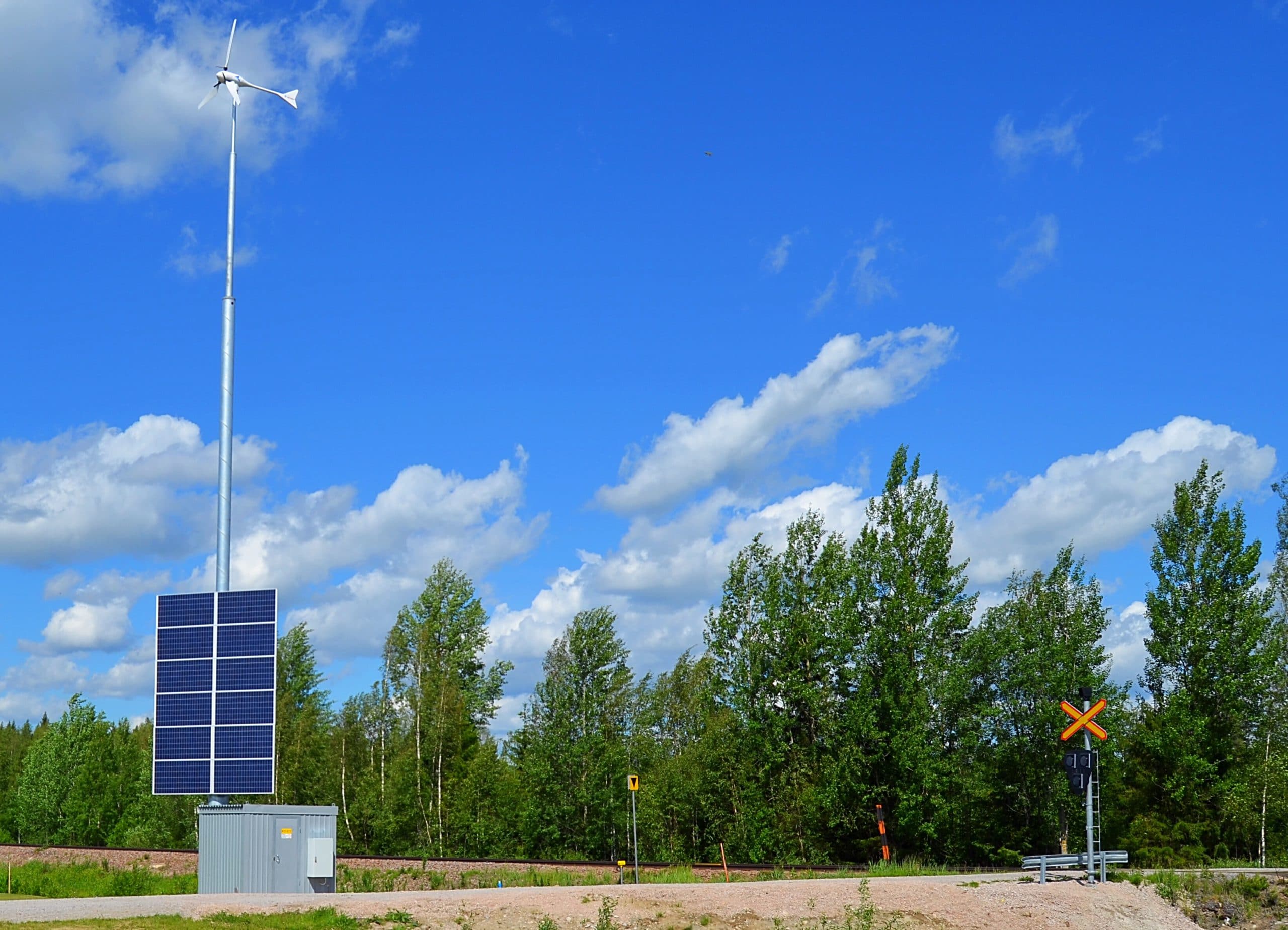Recurring themes in the new government program are investments in rail infrastructure, renewable energy and railway safety. Actors in the field are expected to take action to implement these issues. On June 26th, presumably the world’s first railway level crossing warning plant operating on local wind and solar energy will be launched in Finland.
Probably the world’s first railway level crossing warning plant operating entirely on local wind and solar energy will be launched in Nivala on June 26th, 2019. The plant developed by Proxion has been built at an intersection where there has never previously been a warning plant. It is a pilot that verifies the adequacy of renewable energy and the technology involved in the production and storage of renewable energy for year-round use in truly challenging conditions and in a safety-critical location. The system also meets the strict safety and functionality requirements set for Finnish level crossing facilities. The warning plant has been ordered by Väylä.
Proxion has developed an Energy Management and Storage (EIS) technology, which is capable of collecting electrical energy from several renewable energy sources simultaneously. Electrical energy is stored in modern lithium-ion batteries, from which the level crossing plant is powered. The use of the system can be monitored and controlled remotely. Proxion’s EIS system is suitable for any application where energy supply must be secure, renewable energy is available, but it is not desired or possible to connect to the electricity grid.
“In the world, there is little use of renewable energy in the railway environment. Energy systems with a sufficiently high level of reliability and safety have hardly been available,” says Petri Puikkonen, Proxion’s owner. “We wanted to meet the challenge of increasing railway safety and the use of renewable energy on the railways while being able to create new innovations. Level crossing safety in Finland has been the subject of special discussion, and it is precisely this problem that we want to bring new solutions to alongside the traditional ones,” considers Puikkonen.
There are still about 1,800 unguarded level crossings in Finland without warning technology. The main obstacle to building warning facilities is their cost. The construction of one semi-boom facility costs an average of 250,000 euros, depending on the site.
“Improving railway level crossing safety is one of Väylä’s most important goals. We are pleased to welcome all new solutions that help achieve our goal,” says Aki Härkönen, Väylä’s Senior Inspector. “The new facility type developed by Proxion is independent of the electricity grid and is best suited for sites where it is difficult or expensive to connect to the electricity grid. Väylä is ready to order these facilities for other destinations once the Nivala pilot facility has been found to be safe and reliable. The use of renewable energy is always welcome,” Härkönen sums up.


